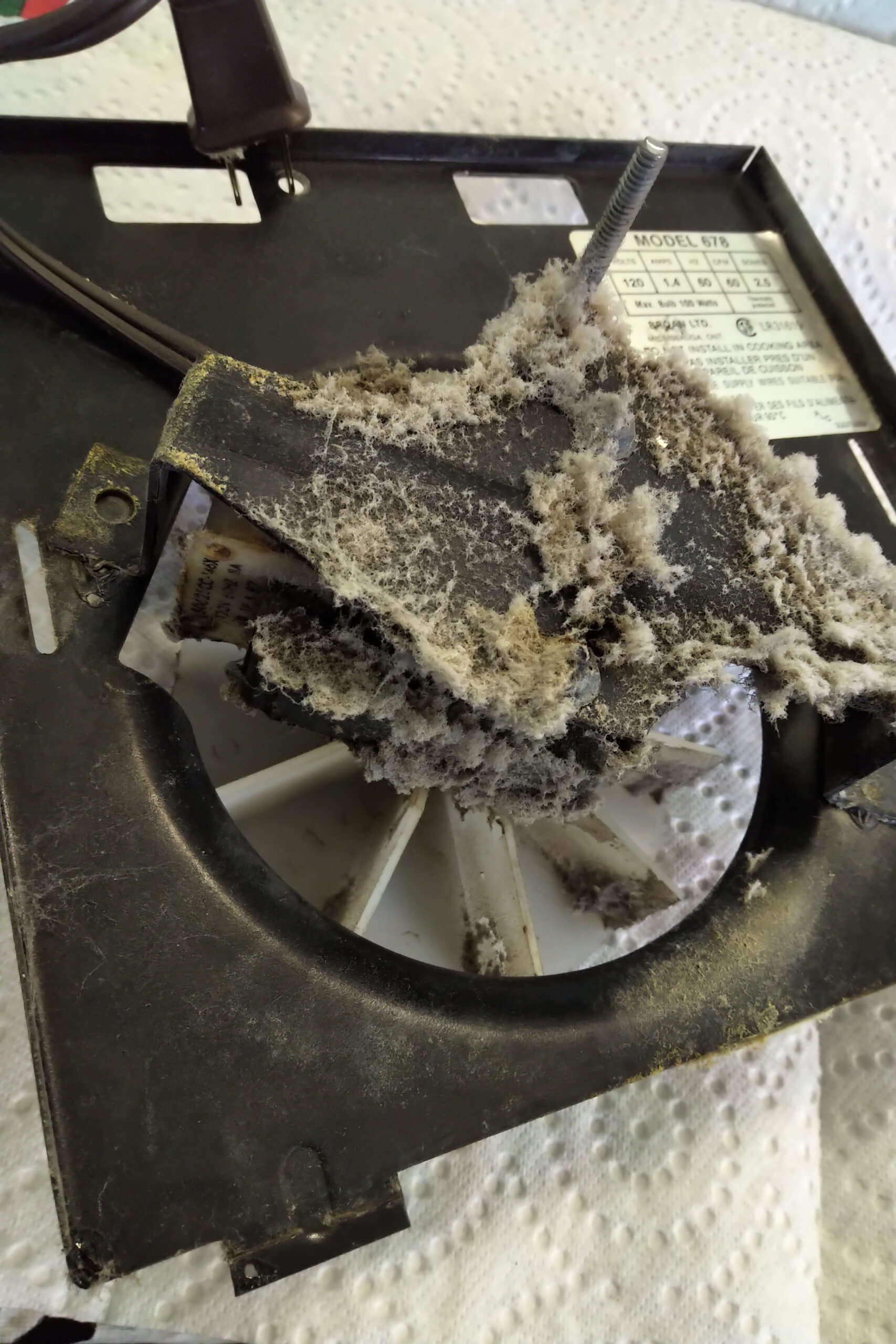Many people are not aware of the fire risk lurking in their bathrooms and attic spaces. Bathroom exhaust fans are a common piece of equipment and are often overlooked during home maintenance activities, but a neglected bathroom exhaust fan can lead to disaster if a failure occurs.
 Often homeowners and tenants will turn the bathroom exhaust fan on when taking a shower or using the toilet. Sometimes they are left on for an extended period to clear humidity and fumes out of the space, often unattended. If the bathroom fan fails, it can ignite combustible dust and structural framing materials which can lead to a major fire loss. And bathrooms aren’t the only places you will find these fans. Exhaust fans are also common in attic spaces, in laundry rooms, and over cooktops in the kitchen.
Often homeowners and tenants will turn the bathroom exhaust fan on when taking a shower or using the toilet. Sometimes they are left on for an extended period to clear humidity and fumes out of the space, often unattended. If the bathroom fan fails, it can ignite combustible dust and structural framing materials which can lead to a major fire loss. And bathrooms aren’t the only places you will find these fans. Exhaust fans are also common in attic spaces, in laundry rooms, and over cooktops in the kitchen.
Bathroom exhaust fans are a simple device consisting of a low torque AC electrical motor connected to a rotary plastic fan within a metal enclosure. Over time, bearings can deteriorate and eventually seize, leading to a condition where the motor can no longer spin. Under normal operating conditions, the electrical current draw of the fan is quite small often around 1 amp. However, when the motor stalls, the current can increase 10x to around 10 amps. This is not high enough to trip the circuit breaker, but it is high enough to overheat the motor windings and cause a fire. The temperature of the motor windings can increase to over 200 °C [1] in this circumstance!
Fan manufacturers have addressed this risk by incorporating protective devices such as thermal overload switches. These switches can shut the fan down if it begins to overheat; however, fans installed prior to the 1990s likely did not have this protection and are at a higher risk of causing a fire. Even newer fans with thermal protection can fail, but there are things you can do to reduce the risk of a bathroom fan failure and fire:
- Inspect and clean your fan regularly. Dust accumulation can prevent proper cooling and increase the risk of overheating. The dust often includes toilet paper particles which are readily combustible. Cleaning can be done with compressed air and special care should be taken to remove as much dust as possible from the fan motor coils. This is also a good time to look for discolouration on the fan motor winding insulation that could indicate overheating is occurring. If the outer insulation on the motor winding has areas of dark brown or looks like it has been baked in an oven, it is time to replace the fan.
- Install a timer switch to control the fan. Using a timer switch reduces the amount of time the fan runs unattended which can lower the risk of fire. Simple timer switches are available that replace the standard wall switch and use the existing switch enclosure, so no drywall damage or repair is required. Look for a timer switch that has a maximum run-time of around 30 minutes that will allow enough time for humidity to clear while also minimizing the time the fan operates without supervision.
- Replace old fans with a newer model that incorporates thermal protection. If your fan is showing signs of overheating or was manufactured before 1990, it is a good idea to replace it with a newer model. Newer fan models incorporate thermal switches that can shut down the fan before a fire occurs.
- Keep an ear out for signs of bearing failure. If your bathroom exhaust fan is making excessive noise or sounds like grinding or grating, it is time to replace it.
These tips can help reduce the chances that your bathroom fan will go up in smoke. If a fire does occur, investigators can determine if it was caused by the bathroom fan by looking for some telltale signs. If the fire originated in the ceiling space where the fan is located, that is a good indicator that it may have been involved. Inspecting the control switch can determine if the fan was turned on at the time of the fire. Looking for signs of electrical arcing on the supply wiring and/or the motor winding can also confirm that the fan was on, and finally, a visual examination of the fan by the investigator can identify signs of overheating and failure, and whether or not a thermal protection device was incorporated by the manufacturer.
If you suspect you have an issue with your bathroom exhaust fan, contact a licenced electrician to perform an inspection and recommend options for replacement.
[1] Reference: CPSC Staff Assessment on Eutectic-Type Thermal-Cutoff Fuse Failures in Shaded-Pole Motors Used in Exhaust Fans, December 2017.
